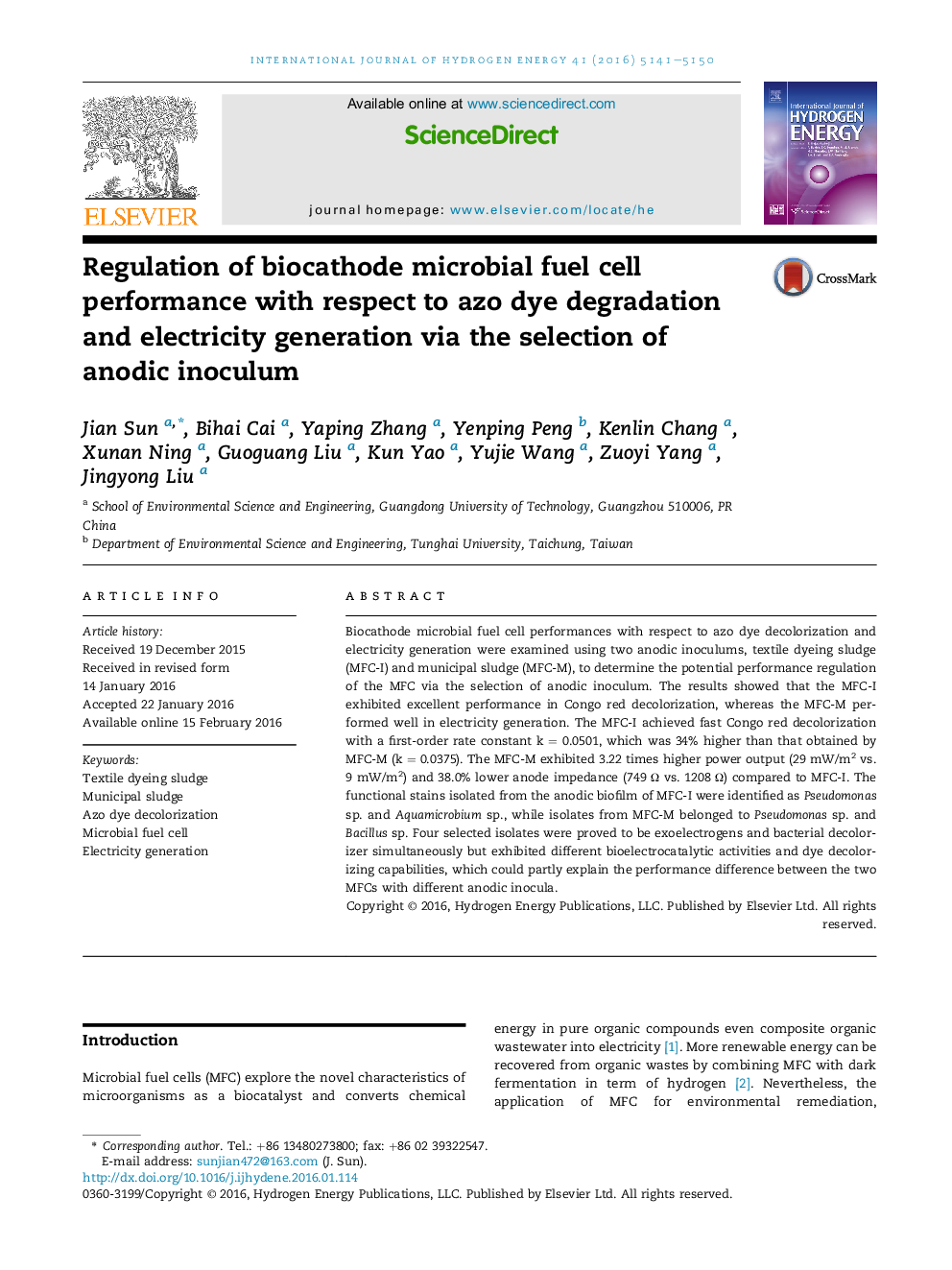| Article ID | Journal | Published Year | Pages | File Type |
|---|---|---|---|---|
| 1268877 | International Journal of Hydrogen Energy | 2016 | 10 Pages |
•Anodic inoculum affects azo dye degradation and bioelectricity generation in MFC.•Dyeing sludge inoculum enhanced dye degradation in MFC compared to municipal sludge.•Municipal sludge inoculum resulted in higher power than dyeing sludge in MFC.•Different functional strains contribute to performance difference between two MFCs.
Biocathode microbial fuel cell performances with respect to azo dye decolorization and electricity generation were examined using two anodic inoculums, textile dyeing sludge (MFC-I) and municipal sludge (MFC-M), to determine the potential performance regulation of the MFC via the selection of anodic inoculum. The results showed that the MFC-I exhibited excellent performance in Congo red decolorization, whereas the MFC-M performed well in electricity generation. The MFC-I achieved fast Congo red decolorization with a first-order rate constant k = 0.0501, which was 34% higher than that obtained by MFC-M (k = 0.0375). The MFC-M exhibited 3.22 times higher power output (29 mW/m2 vs. 9 mW/m2) and 38.0% lower anode impedance (749 Ω vs. 1208 Ω) compared to MFC-I. The functional stains isolated from the anodic biofilm of MFC-I were identified as Pseudomonas sp. and Aquamicrobium sp., while isolates from MFC-M belonged to Pseudomonas sp. and Bacillus sp. Four selected isolates were proved to be exoelectrogens and bacterial decolorizer simultaneously but exhibited different bioelectrocatalytic activities and dye decolorizing capabilities, which could partly explain the performance difference between the two MFCs with different anodic inocula.
